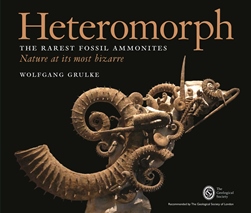 Heteromorph - the rarest fossil ammonites
Heteromorph - the rarest fossil ammonites
I remember as a schoolboy collecting partially uncoiled ammonites from the Gault Clay at Folkestone. Back then, Late Cretaceous ammonites that departed from the planispiral habit were regarded as rare oddities - deformed mutants that heralded the extinction of the order at the end of the Cretaceous. Wolfgang Grulke shows that the modern view of heteromorph ammonites is totally different. He describes how they arose three times during the reign of the order, and that ‘at a point during the mid-Cretaceous they represented almost half of all ammonite species…’.
Some years ago I visited Wolfgang’s astounding private museum in Dorset. At the entrance there is a beautifully prepared surreal assemblage of heteromorphs, pictured on the cover of this book. Wolfgang explains that it wasn’t until ‘the tools and techniques used to extract and prepare fossil ammonites became much more sophisticated in the 1980s and 1990s that the full characteristics of the complex shapes of heteromorph ammonites could be revealed’.
The book contains many stunning photographs showing the beauty and complexity of heteromorphs. It opens with a lay person’s introduction to ammonites, but later chapters require some prior knowledge. These include a treatment of ‘sexy spirals’ including the golden ratio and Mandelbrot’s fractal geometry, lifestyles, evolution and development of cephalopods, and a description of the three heteromorph evolutionary experiments during the Late Triassic, Middle Jurassic and Late Jurassic-Cretaceous.
Each of these episodes is illustrated by environmental reconstructions of marine realms showing possible life habits of monomorph and heteromorph ammonites. The author speculates about how heteromorphs might have lived and whether at least some, such as those shaped like paper clips, had their shells partially enveloped by fleshy mantles. Illuminating; but the evolutionary advantage conveyed by heteromorphy remains unexplained.
In later sections, key locations and collectors from around the world are described, and cephalopod art reviewed. The book ends with an account of the collection, preparation and exhibition of the ‘million dollar art object’ which displays a two by four metre assemblage of over 300 ammonite and nautilus specimens weighing over 2500 kg. This was developed by Luc Ebbo, who has done much to reveal features of heteromorphs missed by earlier workers.
Some purist palaeontologists find such commercialisation offensive, but Grulke’s book shows the importance of the work of ‘professional amateurs’ like him and the commercial collectors and preparators with whom he collaborates in advancing and promoting palaeontology.
Reviewed by Chris Wilson
HETEROMORPH: THE RAREST FOSSIL AMMONITES: NATURE AT ITS MOST BIZARRE by WOLFGANG GRULKE 2014. Published by At One Communications ISBN: 978-0-9929740-0-8 224pp (hbk) List Price £38.00
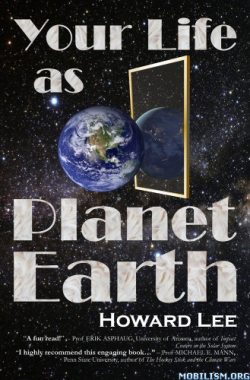 Your Life as Planet Earth
Your Life as Planet Earth
Geology can be a fun subject, but it’s not often that we find it written about that way. Howard Lee has risen to the challenge by imagining that Earth was like a human with a 100-year life span.
In its teens, Earth’s face was pockmarked by acne – from the impacts of asteroids and comets. At 40 years old, its Archaean organisms had merged with bacteria to form the first eukaryotic cells. At 46, primitive organisms had started to fill its atmosphere with a new gas, oxygen. Earth was an ancient 88 year-old by the start of the Cambrian, 540 million years ago.
On its 90th birthday land plants invented wood, enabling them to stand upright. They sucked CO2 out of the air, lowering temperature and triggering a brief ice age some 458 million years ago. By the time Earth was 91, fish begin to walk on land. When it was 92, giant coal swamps sucked enough CO2 out of the air to create a further glaciation some 30 million years long, spanning the Carboniferous-Permian boundary. At age 93, giant eruptions in Siberia spewed enough gases into the air over a long enough period to wipe out 90% of living species.
Not long afterwards, when Earth was 95-96, the supercontinent Pangaea broke apart, and giant dinosaurs roamed the surface, only to die off when a giant meteor hit Mexico as Earth turned 98. Earth turned 99 in the middle of a muggy Eocene epoch, after which the central heating failed, CO2 fell, and ice grew again. By the end of November in Earth’s last year, proto-humans appeared, and as December progressed, the northern hemisphere was beset by ice. Yet at 9.45pm on Earth’s 100th birthday a warm snap arrived with the Holocene epoch.
In Part 2, Lee takes the reader through how things work: drifting continents; plate tectonics; evolution; missing links; dating rocks; antique meteorites and their impacts; the ups and downs of mountains; dating humans; thermometers for times past; ancient climates and what drove them. Signs of past times even include plant and animal remains encased in crystallised urine in packrat middens.
The record of past climates makes clear the role of plate tectonics as a source of CO2, and the role of chemical weathering of silicates in mountains as a sink for it. CO2 can indeed lead temperature change. But it did not within the Ice Age, when Earth’s orbital fluctuations changed temperature, which drove changes in CO2. Where are we now? The orbit has Earth in a cold phase, but our climate is warm. Our emissions of greenhouse gas explain that divergence. It’s not the sun, which is in decline.
The message Lee pulls from the rock record is much the same as that in the Society’s climate change statement. His story is very well documented, supported with 885 references. I highly recommend it for anyone with a mildly scientific background as well as old dogs like me who have forgotten most of the geology they were taught.
Reviewed by Colin Summerhayes
YOUR LIFE AS PLANET EARTH by HOWARD LEE, 2014. E-book, ISBN: 978-0-9766137-1-8 (available from ylape.com and Amazon – Kindle edition £7.66).
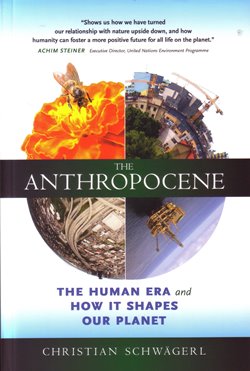 The Anthropocene - The Human Era and how it Shapes our Planet
The Anthropocene - The Human Era and how it Shapes our Planet
There is considerable interest in whether the time, and changing environmental conditions, are ripe for the recognition of a new geological epoch, the Anthropocene. The term, attributed to Paul Crutzen and Eugene Stoermer (2000) is used to denote the present time interval in which many geologically significant conditions and processes are profoundly altered by human activities. A Working Group of the Subcommission on Quaternary Stratigraphy is deliberating.
Into this debate Christian Schwägerl has launched an engaging, impressively well referenced and highly positive book. He is a science and environmental journalist interested in interactions between humans, nature, and technology. Inspired by the idea, he addresses what it might mean to live in the Anthropocene.
The book starts with the life of Paul Crutzen, his ideas and the impact they have had, and ends with a conversation with him in the author’s kitchen. It is built in part on arresting snippets of information: the site of the Iron Curtain has evolved into an impromptu green belt 12,500 km in length, and currently the CO2 emissions associated with making a litre of milk are equivalent to burning a third of a litre of oil.
These are brought together to address major issues around the relationship of technosphere to biosphere, and how they are increasingly interlinked. Cities have to function like nature, technology needs to be a symbiont of the Earth system, not an opponent, and bioadaption could be the new paradigm of technological development.
Economy will become ecology in the Anthropocene because without the services of the oceans, forests, climate and water, a sustainable economy is not possible anywhere. Functioning ecosystems will need to be ascribed their economic value so that they appear on the positive side of company or government balance sheets. That has to happen now, not when they are destroyed.
The failure of world leaders in Copenhagen in 2009 indicates that solutions should be created from below, rather than above. A scenario is developed for one way in which change might come about, including a declaration that the effects of anthropogenic change have been sufficiently great for a new geological epoch to be identified. Change, in this scenario, is driven initially by people in China and North America and it spills over into different power groups and different countries. Like the book, the scenario is thought provoking, positive and well argued. This engaging book deserves to be widely read.
Reviewed by Chris Hawkesworth
The Anthropocene - The Human Era and how it Shapes our Planet by Christian Schwägerl Synergetic Press (2015) 234pp £16.99 ISBN-978-0-907791-55-3
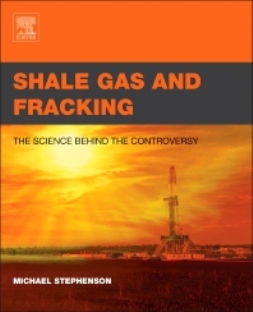 Shale Gas and Fracking
Shale Gas and Fracking
As the preface of this excellent book explains, while many people and institutions are looking for information on shale gas and fracking, much of what they find is often thinly disguised propaganda. The author holds out that one source of information that matters is the science, and his book tells an evidence-based story that addresses the dominant highlights of the current, predominantly non-scientific discourse, as espoused in the popular media and by certain pressure groups opposing the industry.
The book tells a story - the what, how and why of shale gas; and while it is informed by research, community and industrial experience from the US, it is about shale gas and fracking in the UK. Stephenson acknowledges the limitations of shale gas here compared with the US, but puts forward an argument in favour of the industry by putting these limitations in their wider context. He breaks the subject into a series of contested areas and addresses each in turn with an evidence based argument.
While taking an informal style of writing the author cleverly explains some very complex geological topics in a manner that is accessible by the public and not patronising to the specialist. The bibliography at the end of each chapter serves as a starting point for further investigation of that chapter’s subject.
The author also places shale gas in the wider context of climate change. With reference to Pacala and Socolow’s ‘stabilisation wedges’, he shows how shale gas can have a positive impact on climate change and contrasts this with its perceived negative impacts. He delves deeper into the science of energy, with comparisons of burning coal vs. gas, fugitive methane and discusses proposals and rebuttals on the importance of relative impacts.
Particularly good is his discussion of ‘methane in water’, a very clear evidence-based argument that places the media hype in perspective. The argument is well-paced, tells a logical and well referenced story and, while it does lead you to the author’s conclusion, it does imply that that is the ‘only possible’ conclusion.
For both its content and accessibility, this book deserves to become the ‘go-to’ volume on shale gas and fracking for policy-makers, economists as well as geologists, NGOs and local communities. Thanks to the writer’s skill as a science communicator, this book is for everyone and anyone interested in geoscience and how it can galvanise a society.
Reviewed by John Midgeley
SHALE GAS AND FRACKING: THE SCIENCE BEHIND THE CONTROVERSY by STEPHENSON, M 2015. 170pp sbk & Kindle. Elsevier, Amsterdam. ISBN (Print) 9780128016060 (Ebook) 9780128017623. List Price £51.84 (print). Other prices for combinations.
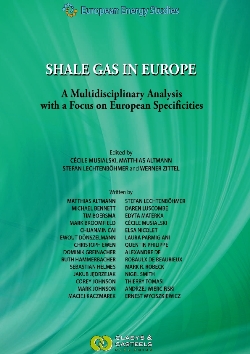 Shale Gas in Europe
Shale Gas in Europe
This multi-author volume will be of value to lawyers, economists, politicians, energy analysts and investors. Typically, in such a book, the chapters are of variable quality; many are totally devoid of diagrams, maps and graphs. Nevertheless the book is unique in its perspective and will be an important text for European shale gas investors for years to come. Unfortunately the translations of certain chapters, particularly those from Polish and French are of only moderate quality and lack consistency – a major weakness where so many key legal precedents and statutes are quoted.
Part One consists of five chapters and has a welcome summary of Shale Gas in the USA. This introductory part goes on to discuss the legal framework in Europe and then moves on to China. In Part Two there is a summary of opportunities in Europe, but also a clear and concise discussion of the particular problems of Shale Gas exploration in densely populated countries
Part Three moves on to the specific environmental challenges facing explorers in Europe and concludes with a case study focusing on information dissemination in Germany.
Finally, in Part Four case histories are provided for France, Poland, Germany and the UK. This section of the book is particularly welcome as it is a clear statement of the varied challenges facing shale gas investors in these countries where data is so scarce, and where exploration has barely began.
Overall a welcome volume which covers topics rarely discussed outside of North America. It does however highlight why the shale revolution has transformed North American exploration and the energy economy, but also why commercial success is Europe is probably decades away
Reviewed by Tony Grindrod
SHALE GAS IN EUROPE: A MULTIDISCIPLINARY ANALYSIS WITH A FOCUS ON EUROPEAN SPECIFICITIES. 2013 . Edited by Musialski, C., Altmann, M., Lechtenbohmer, S.,& Zittel, W. Published by Claeys and Casteels. Deventer, The Netherlands. 553pp Available from Amazon (Hardback) @ £58.42
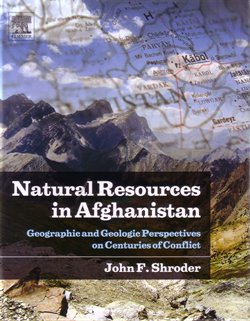 Natural Resources in Afghanistan
Natural Resources in Afghanistan
Afghanistan has been in the news for as long as I can remember, normally as a place of conflict and almost never as a place of diverse landscapes, resources and culture. In 2011, however, I was invited to join a workshop in Leicester on higher education in Afghanistan, meeting a number of geoscience academics from Kabul and beyond. Since then I’ve been fascinated by the potential role of geoscience in supporting sustainable development in this region of the world. Shroder’s book serves to highlight this exciting potential, helping the reader understand both the relevant science and cultural complexities.
Through 21 chapters, this volume presents an overview of the geology and geography of Afghanistan, exploring natural resources as both a problem and solution, and discussing the relationship between environment and development. The final two chapters offer a poignant reminder that there exist both pessimistic and optimistic outlooks about the future of Afghanistan. Overall it covers an impressive range of topics, including geological structures, gemstones, water, soils, geomorphology, hazards and much more.
Interactions between geology and human geography are important, but commonly overlooked in country-specific geoscience texts. Shroder successfully integrates history, culture, politics and geology to give a balanced, informative and holistic understanding of a remarkable nation. The book is also very well illustrated, although a tendency to print small sub-page sized maps meant legends were sometimes too small to read and use properly. The integration of context, together with many helpful figures and tables, should ensure its appeal to a broad audience. The research geologist, industry professional, government official, not-for-profit and intergovernmental organisation should all find it generally accessible, engaging and informative.
Many potential users of this book will not have the English proficiency to benefit from it fully. I hope that a government or intergovernmental organisation will see fit to commission one or more translations into appropriate national languages. Such an endeavour could serve Afghani geoscience students, and other local and national government officials very well, strengthening work towards a more optimistic future.
As researchers and practitioners of applied geoscience, investing in understanding ‘place’ can only enhance our work. Shroder’s holistic integration of geology with a broader geographical and historical narrative demonstrates how this can be done well. More books using this approach would be a welcome addition to the body of geoscience literature in existence.
Reviewed by Joel Gill
NATURAL RESOURCES IN AFGHANISTAN: GEOGRAPHIC AND GEOLOGIC PERSPECTIVES ON CENTURIES OF CONFLICT by JOHN F. SHRODER, 2014. Published by Elsevier Inc. 572pp (hbk) ISBN 978-01280013356 List price: £125.00. W: www.store.elsevier.com/Natural-Resources-in-Afghanistan/John-Shroder/isbn-9780128001356/
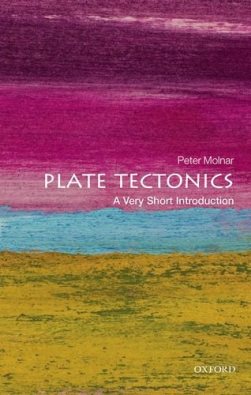 Plate Tectonics - a very short introduction
Plate Tectonics - a very short introduction
The story of how Wegener’s controversial but fruitful theory of continental drift, proposed in 1912, morphed during the 1960s into today’s widely accepted theory of plate tectonics, is well known in outline; less so in detail.
Unlike continental drift, dozens of geologists, geophysicists and others contributed to plate tectonics, many of them personally known to Peter Molnar, who was a US graduate student in the late 1960s and who is determined to give everyone due credit (notwithstanding an index that omits oceanographer Bruce Heezen). But this makes for a challenging task when writing in the format of a Very Short Introduction, the prolific OUP series intended not for specialists but non-specialists wanting a reliable, readable overview of an unfamiliar field.
Often, Molnar’s introduction works well, despite passages of semi-technical argument that will cause head-scratching among its intended readership. In the initial chapter on the theory’s basic ideas, Molnar observes an interesting irony: “whereas Wegener focused on continents …, plate tectonics enjoys its widespread success largely in the regions below deep oceans; … it fails most spectacularly within some portions of continents.” The following chapter on seafloor spreading and magnetic anomalies is the best in the book. History here comes alive, as the radical 1963 hypothesis of Frederick Vine and Drummond Matthews receives increasing experimental confirmation from measurements of the seafloor in many parts of the world.
But subsequent chapters never satisfactorily clarify how the distinct tectonic plates now in use came to be defined—which in turn weakens the discussion of the admitted failures of plate tectonics in explaining, for example, some mountain ranges, earthquakes and volcanoes. Molnar reveals how major Himalayan earthquakes mostly do not occur on the plate boundary between the India and the Eurasia plates. However, he writes not a word about the severe Missouri earthquakes in the North America plate in 1811-12 far from plate boundaries. Nor does he mention the unpredicted volcanism of the Hawaiian islands in the middle of the Pacific plate, currently explained by the hot-spot theory of J Tuzo Wilson (who is of course discussed for his recognition of transform faults).
Moreover, the 1886 earthquake in Charleston, South Carolina, is stated to have rung church bells in far-off Boston, Massachusetts. Oddly enough, precisely the same claim has long been made for the 1811-12 earthquakes, even by the US Geological Survey. Yet, research in the Boston press has thrown up no evidence to support either myth.
Reviewed by Andrew Robinson.
PLATE TECTONICS: A VERY SHORT INTRODUCTION by PETER MOLNAR, 2015.
Published by: Oxford University Press 136pp (pbk) ISBN: 9780198728269 List Price: £7.99. W: http://ukcatalogue.oup.com/
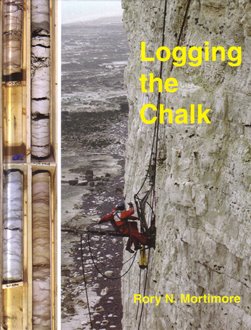 Logging the Chalk
Logging the Chalk
There is a lot more to chalk than the White Cliffs of Dover, and this book does an excellent job of describing its huge variety of lithologies and fabrics. The emphasis is on the English Upper Cretaceous, but since this material is encountered in many civil engineering projects and across the North Sea it is likely that all engineering geologists and geotechnical engineers will encounter it at some stage of their professional career. When they do, this is the book to have to hand.
The author commences with a concise account of the stratigraphy, which no longer features ‘Upper’, ‘Middle’ and ‘Lower’ divisions but instead uses new terms that better reflect regional variations. The bulk of the book is devoted to the recognition and description of chalk within the four main provinces: Southern, Transitional (London, Chilterns and East Anglia), Northern, and Central Graben (including the Northern North Sea). Most pages are devoted to annotated photographs, which reveal the extent and variability of chalk and its component lithologies and fabrics. Particular attention is paid to weaknesses and heterogeneities that might otherwise be overlooked.
Adequately describing chalk for engineering purposes has always been difficult, given its tendency to break up during drilling, and its sensitivity to changes in moisture content. Nevertheless the degree of deterioration brought about by natural weathering is of considerable geotechnical importance and the author provides a pragmatic approach to its description and assessment. This is of particular help when attempting to interpolate between boreholes and/or exposures. The final 20% of the book is devoted to the description of chalk logs.
One of its beauties is the wonderful set of colour photographs used to portray chalk profiles. The publisher has also made available a pdf copy of three additional appendices covering typical chalk core-logs through a variety of weathered profiles, logs of cable-tool percussion samples, and the impact of sonic drilling on penetrating chalk profiles.
The other beauty is the author’s masterly synthesis of chalk description, built up over nearly half a century of study based on the seminal work of BRE (the Mundford scheme by Ward, Burland & Gallois), SML (Spink & Norbury) and CIRIA, using his own experience of chalk from a wide range of engineering projects and field settings.
The profession can only hope that this will become the template for a whole host of similar volumes covering the geological units with which they have to deal!
Reviewed by Mike Rosenbaum
LOGGING THE CHALK by Rory N Mortimore, 2014. Published by: Whittles Publishing 352 pp (hbk) ISBN: 978 1 849 95098 5 List price: £135.00
 Building Stones of West Sussex
Building Stones of West Sussex
This is not just an excellent, exquisite ‘coffee-table’ book; it offers accurate, useful, quality, readable information. The authors, both retired experienced geologists and teachers, are to be warmly congratulated. This work is comprehensively packed with stratigraphical detail, all beautifully illustrated in colour. Surely, a book to be of use to both professional geologists and yet treasured by young enthusiasts.
The book will appeal especially to geologists, for it provides an indispensable guide to the geology of the county. Each rock type is clearly illustrated in its true forms and colours. So often we find authors in this field are apt to concentrate on buildings at the expense of rocks. All of the 30-plus rock types found in the region are examined, their varieties displayed, the history of their use outlined, their quarrying localities indicated, and the names of places where they have been used and may still be seen, provided.
We could quibble, of course, over the use of rock names, as stratigraphers love to do; but even I, obliged to research and check one name, found the authors totally correct. To the indigenous rocks, some 20 imported rock types are added, and given the same excellent, precise treatment.
The whole work was desktop-published by the authors and the printing and hardback binding undertaken by Colour Printing International (CPI Antony Rowe) of Chippenham who were overlooked in the acknowledgements. I approved so much of the quality of their work, I had to enquire from the authors!
In 2006 Roger Birch moved some way towards the present production when he produced his popular colour guide to ‘Horsham Stone and Sussex Marble’. That this was not to be the last of his researches was indicated when he gave that work the sub-title ‘Sussex Stones’.
This book is the result of extensive continued research by the authors. It has been compiled with great care. The hundreds of localities referred to where the various rocks occur, have all clearly been visited, and carefully photographed. The result is a book that can be used by church historians, conservators and archaeologists, to actually correctly identify rock types. If you have no idea of what Pulborough, Lavant or Mixon Stones look like, or have been used for, you too should possess a copy.
Reviewed by John F Potter
BUILDING STONES OF WEST SUSSEX by ROGER BIRCH AND ROGER CORDINER 2014. Self-published. ISBN 978-09551259-1-1.349pp, List Price: £34.99. Currently from R Cordiner, 9 The Rowans, Grand Avenue, Worthing BN11 5AT E: [email protected]
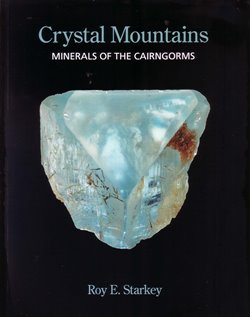 Crystal Mountains - Minerals of the Cairngorms
Crystal Mountains - Minerals of the Cairngorms
The fourth of the recent series of British Mineralogy Publications on specific geographic areas of British geology, this latest book presents a comprehensive account of the geological background and historical context of the most famous Scottish mineral and gem-prospecting locations.
Presented in 11 main sections, the volume concentrates on the principal mineral species of the Cairngorms National Park and adjacent areas of NE Scotland. Introduced with an overview of the tectonic setting and igneous geology of the Cairngorms, the mineralogy and occurrences of the main mineral groups (smoky quartz or ‘cairngorm’, beryl and topaz) are described in detail, with a general account of the associated subordinate mineral species encountered within the National Park. Each mineral group is lavishly illustrated with numerous full-colour photographs of the more significant specimens (many previously unpublished), and extensively supplemented with images of the spectacular upland scenery and landscapes they are located within.
The volume also documents the associated social histories involved in ‘winning’ the minerals, chronicling the gruelling (and sometimes perilous) endeavours of individual collectors. The important public and private collections (local, national and Royal!) and the processing (lapidaries and jewellers) of the gemstones are also described. An interesting bonus to this mineralogical legacy is a section summarising the connection the area had with the UK’s military technological development during WW2, outlining the research into the physical science and engineering applications of synthetic quartz (used as a material to improve the reliability of oscillators in RAF radio-transmitting and receiving equipment) that was partly inspired and informed by ‘cairngorm’ specimens collected in the area.
The author has produced a painstaking research account of his subject: a definitive work achieved by enthusiastic effort. Thoroughly researched and authoritative, the various contributions to the book project of well-over 200 individuals are acknowledged by the author. In summary, this reviewer found the volume to be a well-balanced, detailed and entertaining read, and is recommended. Affordable and accessible, Crystal Mountains is anticipated to become a valuable resource to researchers in British mineralogy, gemmologists and mineral collectors. Reference to the volume will undoubtedly enhance any trip to the Cairngorms National Park for all visitors who have an interest in Scottish geology and mineralogy, social history or the photography / art of dramatic natural landscapes.
Reviewed by Mark Griffin
CRYSTAL MOUNTAINS – MINERALS OF THE CAIRNGORMS. By Roy E. Starkey. British Mineralogy Publications. 2014. ISBN 978-0-9930182-1-3. Sbk. 178pp. List Price: £25.00, www.britishmineralogy.com
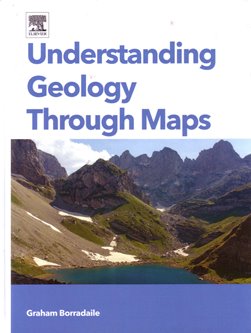 Understanding Geology Through Maps
Understanding Geology Through Maps
'Geological Map Interpretation' would be an alternative title for this no frills, workmanlike volume. It would seem to be a reworking and publication of tutor's notes for a first-year university course; although in some places it is stated that this is a stand-alone ‘course’, in others the reader is referred to ‘your supervisor’. So I have concluded that the author was writing this as a text to accompany and provide source material for an introductory course on geological maps. Indeed it does feel more like a textbook aimed at providing a lecturer with some source material.
In the foreword the author offers some insight into his expectations of the person who buys this book, namely: “A student's most powerful tool is humility; if you commence this course...with the same rigorous, scholarly attitude as with a course in calculus, you will develop a very powerful level of comprehension”. No doubt true, and while the exercises contained in the book are straightforward, there are no answers, which I feel might be a little harsh if the student is not confident with the subject matter.
As a lecture aid it is very adequate, although I feel it will not necessarily enthuse those who do not have the requisite ‘attitude’, and who might like their illustrations to be in colour, or to be less of a detective story. The explanatory text for some of the exercises does need to be sought out, and could well lead to confusion and frustration.
The text is abundantly illustrated in black and white, and even the geological map extracts have been reworked, perhaps to facilitate copying. As a result there are quite a few typos, the most disorientating of which is in figure 7.4 which places the Wenlock and Llandovery within the Ordovician on the (all Silurian) Island of Gotland!
I suspect that given a choice between this austere format and more modern styles (such as Bennison et al. 2011) the latter is likely to appeal to the lone student, whereas the subject of this review may well be preferred by a lecturer who needs the lesson-plan virtually on a plate.
In terms of the content, this book is technically comprehensive, and it does what it says on the cover despite its drawbacks.
Ref: Bennison G, Olver P, Moseley K 2011. An Introduction to Geological Structures and Maps. Hodder Education
Reviewed by: Arthur Tingley
UNDERSTANDING GEOLOGY THROUGH MAPS, by GRAHAM BORRADAILE, 2014. Published by: Elsevier 183 pp [Hardback] ISBN 978-0-12-800866-9
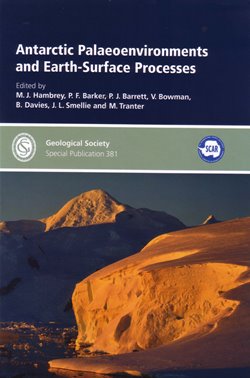 Antarctic Palaeoenvironments and Earth-Surface Processes
Antarctic Palaeoenvironments and Earth-Surface Processes
This Geological Society Special Publication was published in honour of Peter Frank Barker and contains 26 papers from the 11th International Symposium on Antarctic Earth Sciences. The papers are presented in three major themes: Palaeozoic & Mesozoic evolution of the Antarctic continent, Cenozoic glaciations & impacts and Glacial and Periglacial processes.
While this is an adequate description of the books contents it does not do justice to the depth and breadth of topics covered in this volume. The book opens with a thorough review of the Transantarctic Mountains and the tectonics theme continues with a novel technique for measuring offset on an inferred fault beneath the Byrd Glacier and the characterisation of stress fields within the South Orkney Microcontinent.
The book then shifts to a “soft geology” focus with an impressive overview of the Devonian Taylor Group sediments, a review of dinosaurs from the James Ross Basin and a biogeographical study of Austral echinoid faunas. If one paper on bipedal theropods wasn’t enough, the Cenozoic section opens with a taxonomic revision of Eocene penguins!
This section continues with a smorgasbord of papers covering everything from seismic stratigraphy to novel methods for reconstructing bioproductivity. The final theme provides a series of papers on the processes that are operating on Antarctica today or in the more recent geological past. This section continues the diversity of topics with papers on geomorphology, Antarctic soils, palaeoshoreline studies, seismic studies of drift deposits and EnviroSat based snow mapping.
Of particular note in this section is the review of present and potential future periglacial processes and landform studies. This paper provides the wonderful combination of known and unknown, which is suitable material for future research. Combined with extensive photos of features, some with question-marked processes, this makes for a compelling read, even for a palynologist!
Overall, this volume of the Geological Society’s Special Publications is an excellent addition to any desk, bookshelf or library. It covers a wonderful breadth of topics without any lack of depth. As entertaining and interesting as it is useful, I would recommend it to anybody with research interests on the Earth’s coldest continent.
Reviewed by Matthew Pound
ANTARCTIC PALAEOENVIRONMENTS AND EARTH-SURFACE PROCESSES edited by M J Hambrey, P F Barrett, V Bowman, B Davies, J L Smellie and M Tranter, 2013. Geological Society of London Special Publication 381; 506pp (hbk) ISBN: 9781862393639 List Price: £125.
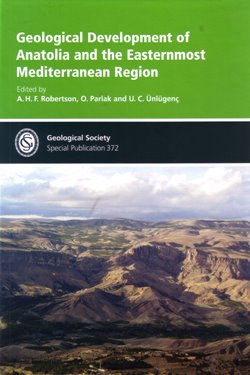 Geological Development of Anatolia
Geological Development of Anatolia
This special edition presents a comprehensive collection of 22 papers on the development of the Anatolian region from the Late Palaeozoic to the present day. The papers represent a wide range of areas encompassing the whole region and cover an array of topics with a distinct structural and tectonic bias. The volume is organised in an approximate chronological order for the casual reader, however an annotated map in the introduction helpfully locates the area covered by each subsequent paper allowing the reader to jump to particular sections of interest.
Notable contributions include Robertson et al.’s extensive multi-disciplinary paper on East Tauride tectonics which includes a selection of structural, chemical and palaeontological analyses to give a well-reasoned account of the tectonic history. Hardenberg & Robertson’s submission on sinistral strike slip motions in Syria, an in-depth paper by Duman & Emre on segmentation of the East Anatolian Fault and a very accessible study by Harrison et al. on the uplift history of Cyprus using carbon dating and luminescence data in conjunction with structural mapping. The volume contains a large number of illustrations and micrographs throughout which complement the detailed text.
There are also two excellent submissions by Parlak et al. on the Ispendere Ophiolite and other ophiolites in northeast Anatolia. Both papers include detailed maps and sections and some delightful colour micrographs alongside detailed geochemical analysis. Again, it is this multi-disciplinary element which sets apart the papers within this publication.
The text is let down somewhat by patchy proofreading with mistakes evident in titles, authors' names and diagrams, which is disappointing for a Special Publication. Additionally, some diagrams, for example several figures presenting structural information in Kinnard and Robertson, are reproduced in greyscale and/or otherwise in dimensions such as to render them largely unintelligible.
At almost 650 pages this is certainly one of the longer special publications (and I suspect could have been much longer still) but justifiably so given the complexity of the region. All things considered, the collection is an enjoyable and deeply informative read for postgraduates, academics or professionals with an interest in the tectonics of Anatolia.
Reviewed by Amy Clare Ellis
GEOLOGICAL DEVELOPMENT OF ANATOLIA AND THE EASTERNMOST MEDITERRANEAN REGION. Robertson, A H F, Parlak, O & Ünlügenç, U C (eds) 2013 Geological Society, London, Special Publications, 372.
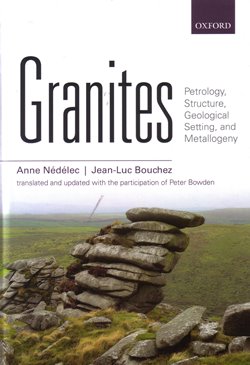 Granites: Petrology, Structure, Geological Setting and Metallogeny
Granites: Petrology, Structure, Geological Setting and Metallogeny
Granites and granitic rocks (with their associated magmatism) are the signature components that characterise the growth and evolution of the (upper) continental crust. Presented in 14 successive chapters, this volume systematically covers the major aspects of the petrology, mineralogy and geochemistry, petrogenesis, physical and structural nature, and economic characteristics of these important crustal rocks.
The significant features of granites are described and defined by a modern, multidisciplinary approach. The key details and arguments associated with the major topics in granite geology are presented within the context of their tectonic framework, geological setting and (more broadly) in relation to Earth evolution and plate tectonics. The authors have managed to successfully integrate information from a wide variety of data sources to produce a comprehensive and current synthesis on the geology of granite.
Developed from the original French edition1 the text in each chapter is clearly and concisely written and edited, with this reviewer encountering only occasional and minor translational / contextual errors. The text is presented with numerous and appropriate data-tables, graphs and excellently drafted black and white line diagrams, maps and photographs. Most chapters are additionally supplemented by several ‘Information Box’ inserts that provide more detail on specific topics that underpin and inform the arguments presented in the corresponding main text. This approach enables the reader to build a greater appreciation of the topic if required and effectively augments the principal textual content. The volume also includes a concise and useful glossary of specific granite-related terminology and an extensive (with over 350 entries) and comprehensive reference list.
The anticipated audience is expected to be broad-based, appealing to both an academic and general science readership. The book will be a valuable reference work for advanced undergraduate Earth Science courses in igneous geology, mineralogy and geochemistry and economic / ore geology. Post-graduate academic and industry-based geoscientific researchers will undoubtedly find the volume to be a modern and thorough introductory text to the geology of granite.
The authors, translator and publishers are to be congratulated on producing a welcome, authoritative and insightful contribution to the literature on granite. A recommended (and affordable) read!
Ref: Editions Vuibert. 2011. Pétrologie des Granites – Structure – Cadres géologique. Paris 2011.
Reviewed by Mark Griffin
GRANITES: PETROLOGY, STRUCTURE, GEOLOGICAL SETTING AND METALLOGENY by Anne Nédélec, Jean-Luc Bouchez and Peter Bowden. Oxford University Press. 2015. ISBN 978-0-19-870561-1. Hbk. 352pp. List Price: £49.99, www.oup.com/uk
 Geodynamics (3rd Edn)
Geodynamics (3rd Edn)
For the past three decades, Donald Turcotte and Gerald Schubert’s first edition (1982) was a landmark book that has guided many teachers and students alike in the field of geodynamics. The second edition was published 20 years later and now in 2014 a third edition has appeared.
After an introduction to plate tectonics on Earth and other planets, the various physical and chemical processes are treated including flexure of plates, heat transfer, gravitational processes and the mechanics of fluids and rocks. When compared to the second edition, a whopping 167 pages have been added, equivalent to an extra 38% of content. This extra material consists almost entirely of two chapters listing MATLAB program codes to aid with computational applications. This would be of high value for students and researchers in training who are involved in programming their own geophysical applications. For the non-programming reader, this extra content is of less interest.
The back page claims that the book is fully updated and key figures are available in colour. However at closer examination of the original 10 chapters, only limited updates are found. Several extra problems are discussed, and every chapter ends with a brief conclusion. As most referenced text and figures refer back to publications from the previous century, one starts to wonder whether geoscientific research has progressed over the past 15 years at all! Some colour figures are now included, showing various features of extraterrestrial bodies. Unfortunately no equivalent colour images are provided of the Earth (i.e., satellite imagery, topography, gravimetric or magnetic field), which would have been valuable additions.
Deeper geodynamics such as core and lower mantle processes seem to be largely missing from the book. This is a lost opportunity as in recent decades much progress has been made on understanding the geodynamo and imaging of the mantle by means of seismic wave tomography. In terms of the books online content, all figures and answers to selected problems can be downloaded from the publishers’ website. Unfortunately this seems to be only possible as a registered lecturer because a link needs to be provided to a staff profile webpage.
In conclusion, after starting reading with high expectations on the fully updated content, it seems that the book, which is still a classic on plate tectonic knowledge as established in the previous century, has only scratched the surface on more recent work and deeper geodynamics in general.
Reviewed by Douwe G van der Meer
GEODYNAMICS by DONALD TURCOTTE & GERALD SCHUBERT (3rd Edn). Published: April 2014, Cambridge University Press; ISBN 9780521186230; 472pp sbk. W: www.cambridge.org.
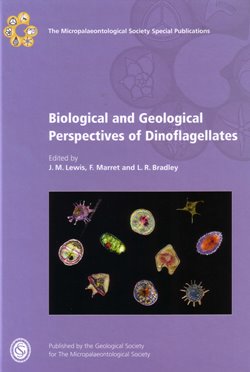 Biological and Geological Perspectives on Dinoflagellates
Biological and Geological Perspectives on Dinoflagellates
Dinoflagellates are eukaryotic protists and can be found in most aquatic environments, with about half being autotrophs; most significantly, they are a major component of the marine phytoplankton. Specific dinoflagellates are responsible for harmful algal blooms and paralytic shellfish poisoning.
The organic-walled cysts of dinoflagellates (dinocysts) have a fossil record stretching back to the Middle Triassic and quickly radiated reaching peaks in diversity during the Albian, Maastrichtian and early Eocene. However, they have a geochemical signal (dinosterane) suggesting an ancestry at least back to the Early Cambrian.
Dinoflagellate cysts tick all the right boxes when it comes to index fossils: wide geographic distribution, ecologic tolerance, abundance, rapid evolution rate and distinct morphologic features. In 1996 the late Robert Knox opined that ‘They are now established as perhaps the most effective means of correlating across the broad spectrum of facies encountered in the onshore and offshore basins of NW Europe’.
Since the classic incubation experiments by David Wall and Barrie Dale in the 1960s confirmed the relationship between fossil cysts and living thecae, the need for collaboration between biologists and palaeontologists became apparent. So began the first in a series of ‘Fossil and Modern Dinoflagellate’ conferences in 1978. This volume represents the fruits of the ninth such meeting held at the University of Liverpool in 2011.
The volume kicks off with an insightful personal account of the history of the ‘Dino conferences’ by Martin Head and Rex Harland, followed by a short review by Potvin, and a citation by Jim Riding for a (richly deserved) Lifetime Achievement Award bestowed on Rob Fensome (and his response).
Rather than present an array of loosely connected conference papers, the editors have sensibly arranged the rest of the volume into four main themes reflecting the structure of the meeting itself: Environmental Change, Ecology & Palaeoecology, Life Cycles & Diversity, and Stratigraphy & Evolution.
Each section begins with a ‘keynote paper’ and ends with a paper devoted to future research. Abstracts to papers and posters not featured in the volume are also helpfully included. Because the Neogene is effectively the interface between fossil and living dinoflagellates, it is no surprise that the bulk of this volume covers post-Paleogene themes. In his response, Rob Fensome expressed concern for the apparent decline in pre-Neogene studies ‘in the context of our understanding of dinoflagellate evolution’.
The editors should be congratulated on producing such a worthy addition to The Micropalaeontological Society’s Special Publication series.
Reviewed by James Powell
BIOLOGICAL AND GEOLOGICAL PERSPECTIVES OF DINOFLAGELLATES by J.M. LEWIS, F. MARRET AND L.R. BRADLEY (eds) . The Micropalaeontological Society, Special Publications, Geological Society, London, 2013. TMS Member Price £50.00